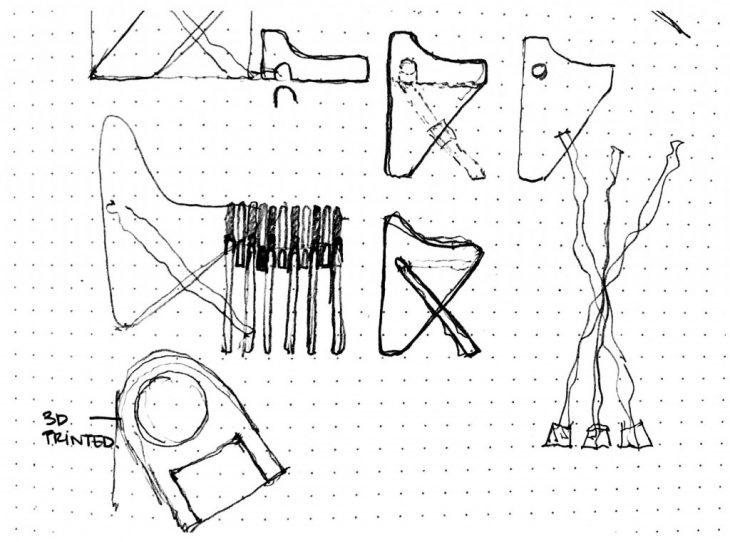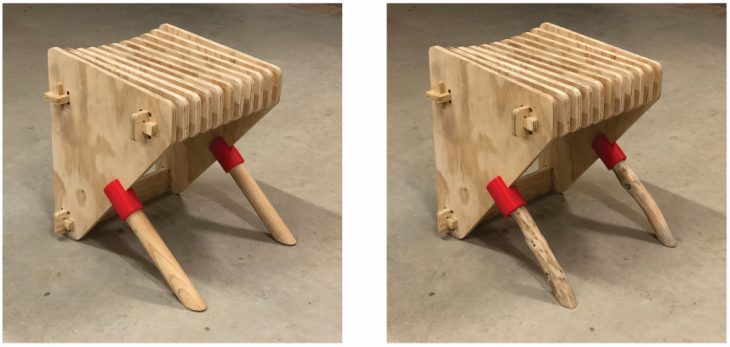
A desk, a stool, and a lounge chair.
Spatially Efficient Furniture for Domestic Work Spaces
‘Tamboret y Taula’ is a furniture set through which subtractive and additive manufacturing techniques are explored. Ever since the COVID-19 pandemic, the need for domestic work/study spaces is increasing: therefore, spatial efficiency is a priority for this design. Taula can double as a desk (to be used with Tamboret) or as an individual floor lounge chair. When Taula is used as a desk, Tamboret is stored under it.

Generative Sketches

Tamboret Stool Detail
Tamboret: A Stool for Domestic Work Space
This stool is inspired by Richard Neutra’s 1942 “Boomerang Chair”. The main strategy for Tamboret is the interaction and relationship between two opposing forces, and the joinery for these two elements. Consequently, subtractive manufacturing is used for the two opposing elements and additive manufacturing is used for the joinery.

Elevations and Axonometry of the Tamboret Stool
The first element is an ergonomic sitting surface. It’s designed with a slight curvature and a comfortable working angle. This surface is sectioned and fabricated in the CNC milling machine using 15mm plywood, expressed dog bone joints, and an 8mm up-cut endmill. The sectioned pieces are connected by three ribbed elements that give structural stability to the overall sitting surface.

Assembly of elements.
The support for the sitting surface is the second element, composed of two legs that have a perpendicular angle in relation to the sitting surface profile. Two options are considered and tested: natural ~30 mm branches from the trees of Valldaura, and standard 30mm plywood dowels.
The structural capacity of PLA is tested through the 3d printed joinery, which is the focal point of this design. This joint is designed to fit the sitting surface and the legs through dog-bone and pressure joints, respectively.

PLA Joint Detail
The Laser Cutter is used for small scale prototyping. In addition, a jig is designed and fabricated to cut the natural branches to the right length and angle.

Comparison of 30 mm dowels vs. natural tree branches.
Taula: Furniture for Spatial Efficiency

Axonometry of Desk rotation into Floor Lounge Chair.
Taula is a desk that can also turn into a floor lounge chair only by rotating it 90 degrees. The dog-bone joint commonly used in subtractive digital fabrication is thoroughly explored and expressed in all its possible scenarios.
As a design strategy, a dimension system with it root on 6cm is used for the coexistence of the two uses. Thus, the desk height of 72cm becomes a comfortable lounge chair depth, and the desk depth of 48 cm becomes a comfortable lounge chair height. In addition, a side shelf for desk storage turns into an integrated side table for books, food and drinks.
For fabrication, 15mm plywood is milled in a CNC, using a 8mm up-cut endmill. Tolerances are tested thorougly to ease assembly, which can be done only using a rubber mallot.

Assembly elements and process.

Assembly using only a rubber mallot.
